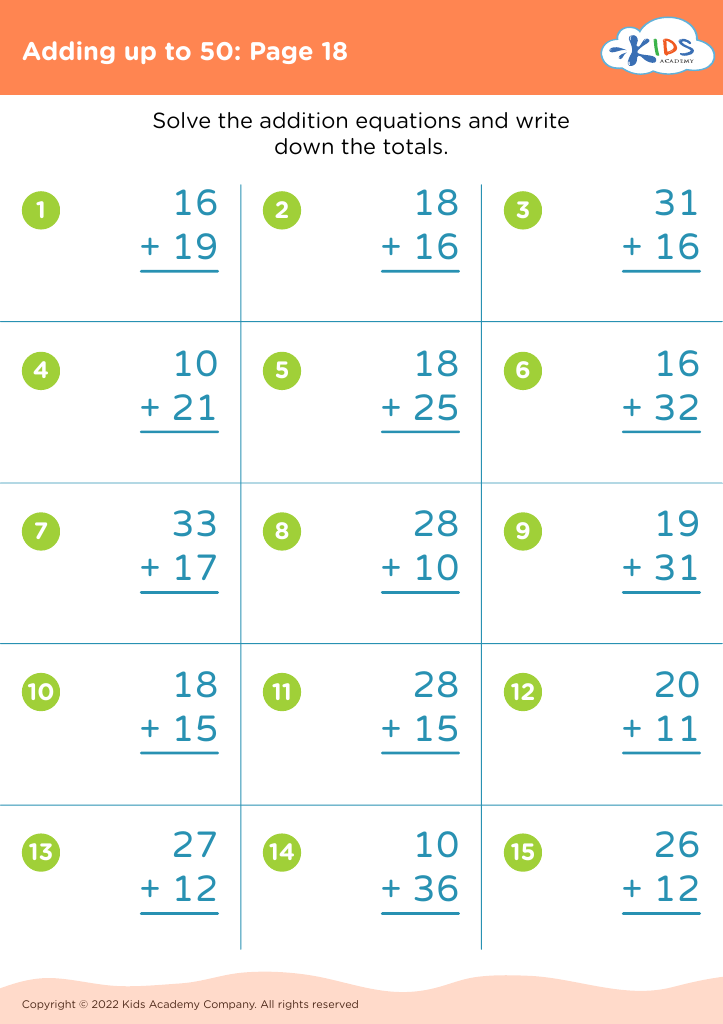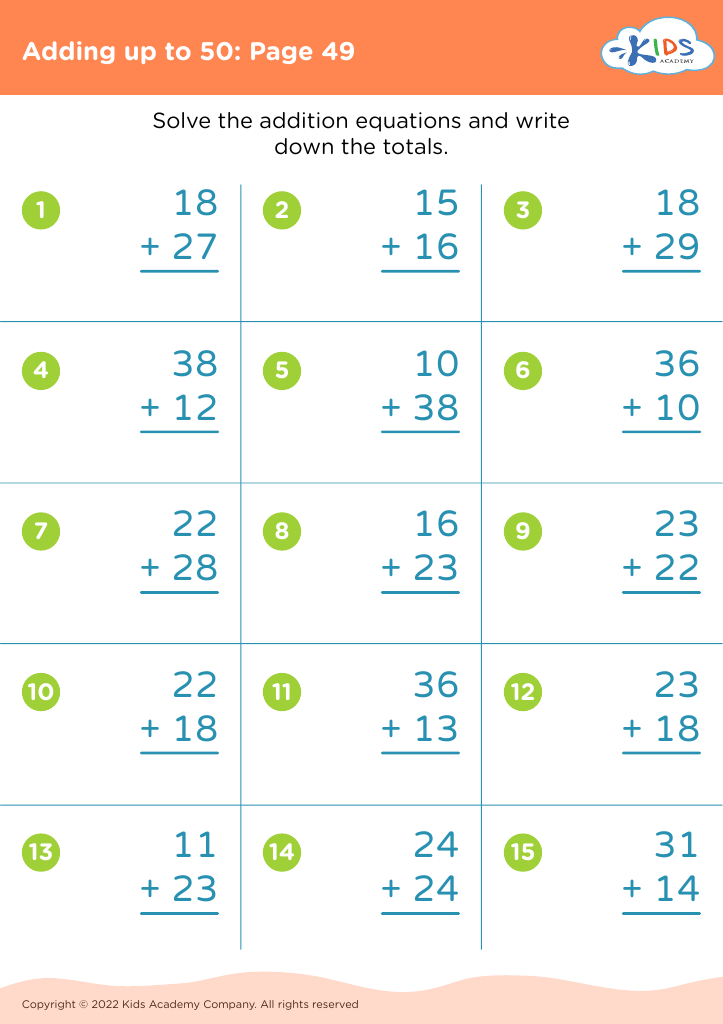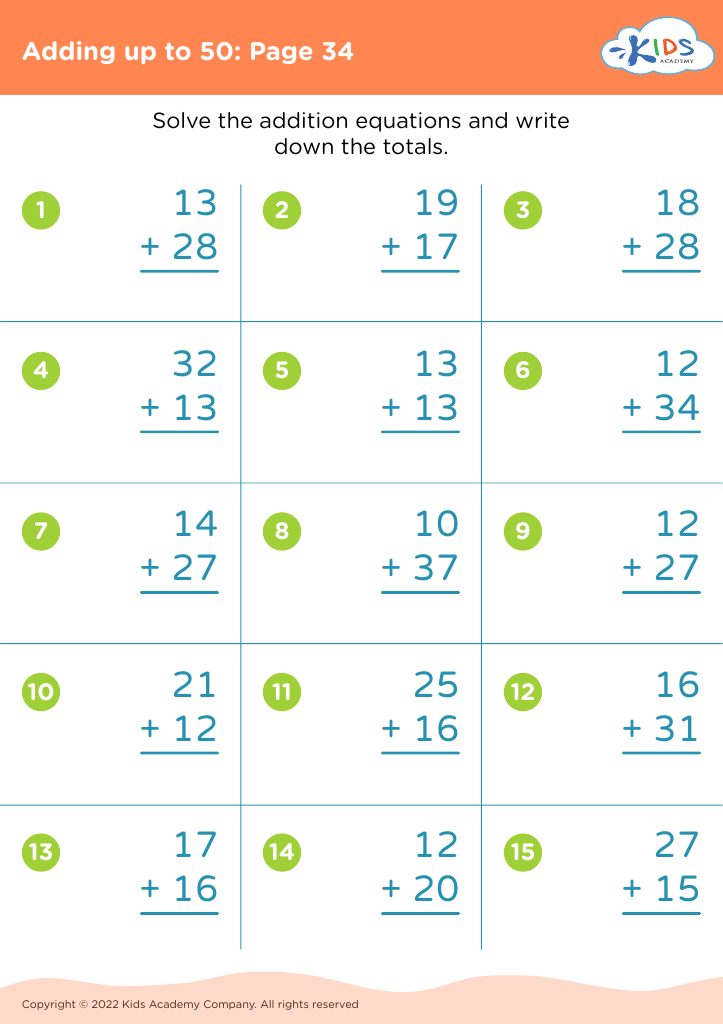Understanding fractions Adding up to 50 Misc Worksheets for Ages 6-7
17 filtered results
-
From - To
Explore the "Understanding Fractions: Adding Up to 50 Misc Worksheets" designed especially for young learners ages 6-7. These engaging worksheets help children grasp the fundamentals of fractions while practicing addition skills, helping to build a strong mathematical foundation. Through colorful visuals and interactive exercises, students will learn to identify, compare, and add fractions in a fun and accessible way. The varied activities cater to different learning styles, ensuring that every child can enjoy mastering these essential concepts. Perfect for classrooms or at-home practice, our worksheets encourage independent learning while strengthening confidence in math. Start your child’s journey into the world of fractions today!
Understanding fractions is crucial for children ages 6-7 as it lays the foundation for essential math skills that will be built upon in later years. Fractions, like 1/2 or 3/4, represent parts of a whole, which helps children develop a deeper understanding of quantities and relationships between numbers. When children learn to manipulate fractions, they enhance their ability to perform more complex operations in mathematics, setting the stage for topics in geometry, measurement, and algebra.
In the context of adding up to 50, interacting with fractions can help solidify these concepts as children learn to combine parts. By visualizing and calculating fractions, students also sharpen critical thinking and problem-solving skills. Engaging with fractions helps children appreciate the world around them, from dividing pizzas to understanding time and money.
Moreover, when teachers and parents emphasize the importance of fractions and their applications, they foster a positive attitude towards math. This encouragement can diminish math anxiety, helping children gain confidence in their abilities. Ultimately, understanding fractions and addition empowers youngsters to succeed academically and nurtures lifelong mathematical interests. By instilling these skills early, we equip them for future challenges in school and real-life situations.






























